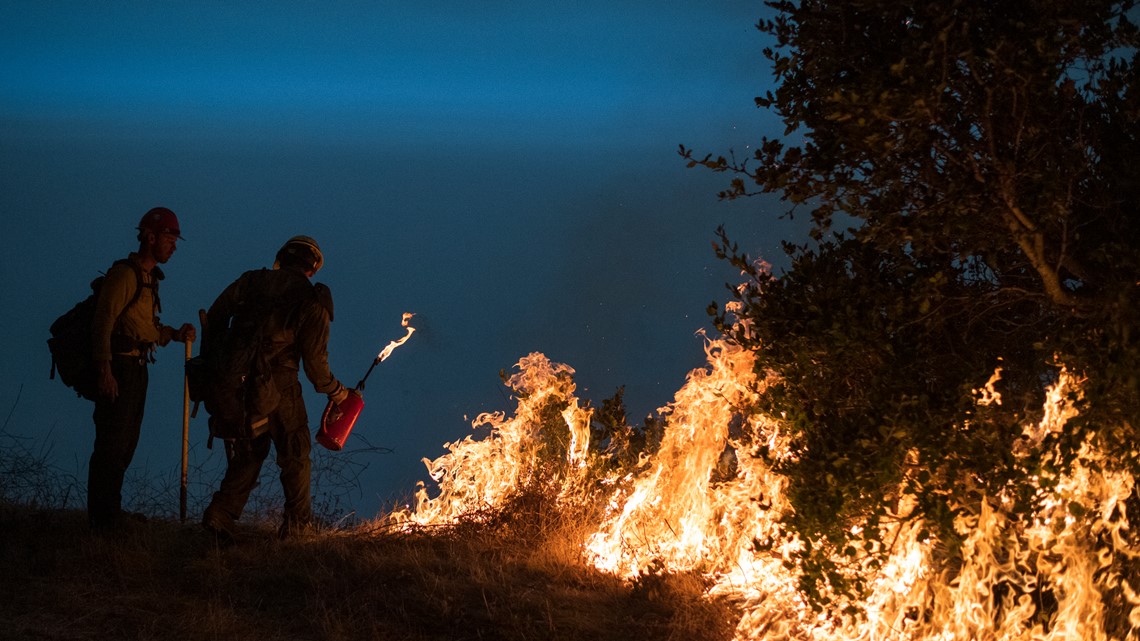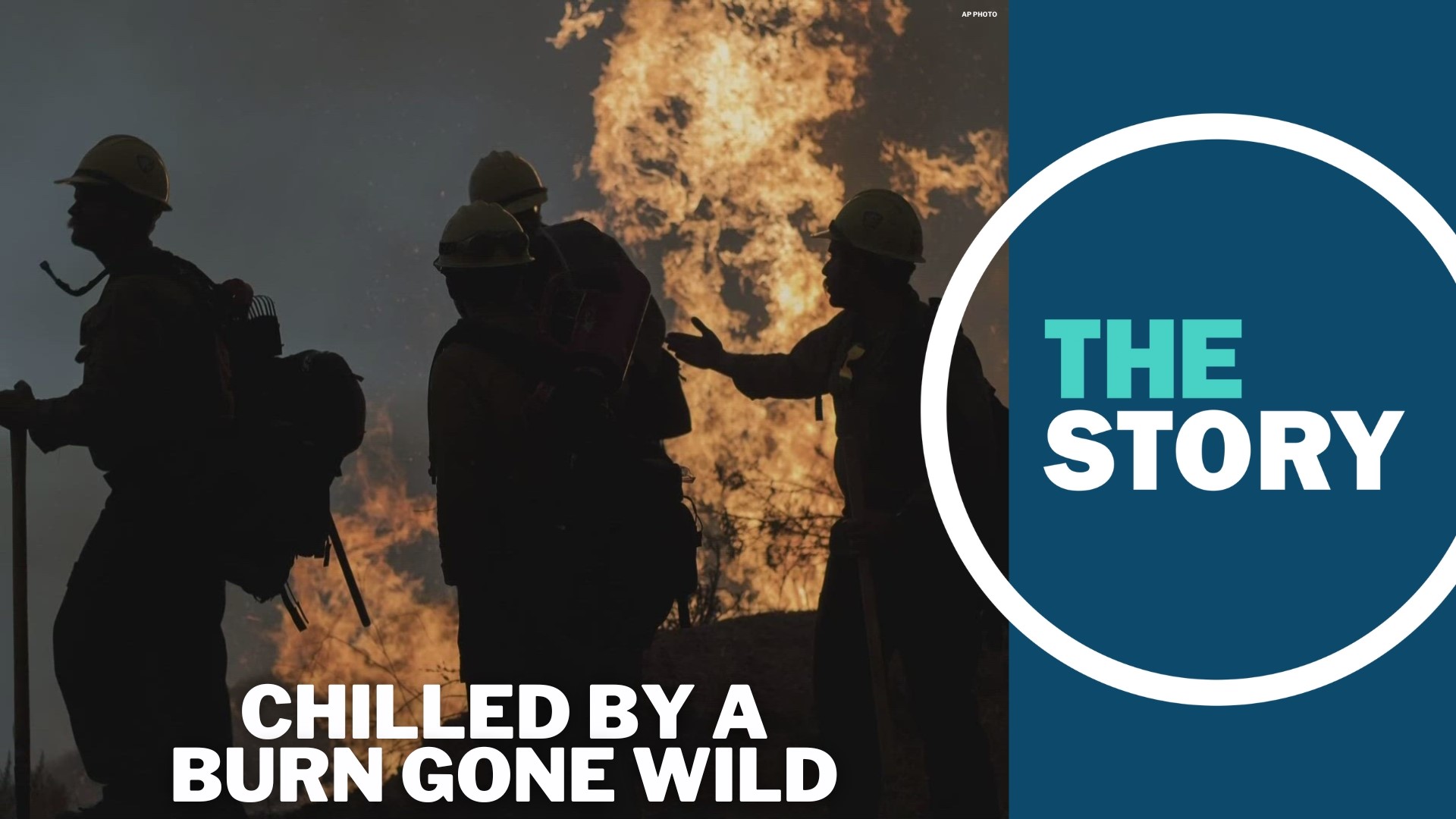PORTLAND, Ore. —
When U.S. Forest Service firefighter Ricky Snodgrass was arrested in October 2022, it rippled through the agency.
Snodgrass had been overseeing a controlled burn in the Malheur National Forest in eastern Oregon. The fire escaped containment and burned roughly 20 acres of private land.
After some local residents confronted the crew, Snodgrass called the sheriff to intervene. But responding deputies placed the federal "burn boss" under arrest on a charge of reckless burning.
“In my opinion, this arrest was highly inappropriate under these circumstances, and I will not stand idly by without fully defending the Burn Boss and all employees carrying out their official duties as federal employees,” U.S. Forest Service Chief Randy Moore wrote in a memo to employees soon after the incident.
In a written statement after the arrest, Grant County District Attorney Jim Carpenter said that Snodgrass would receive no special treatment just because he was a federal employee.
"These cases rarely have a bright line and involve a number of variables to be considered," Carpenter said. "However, to be clear, the employer and/or position of Snodgrass will not protect him if it is determined that he acted recklessly. That the USFS was engaging in a prescribed burn may actually raise rather than lower the standard to which Snodgrass will be held."
Grant County Sheriff Todd McKinley and Carpenter declined to comment on the case for this story.
Since the arrest, Snodgrass has been arraigned on the charges and his defense attorneys are working to have the case moved to federal court. But Max Alonzo of the National Federation of Federal Employees, the union that represents Snodgrass, said there are more far-reaching effects of the incident.
He said many of the federal firefighters he talks to are wary of overseeing controlled burns now.
“I already know so many people that want to let that that certification drop off of their red card because it's not worth it,” he said, referring to the certification card all wildland firefighters must carry. “They're not getting paid extra to do this.”
And that could spell trouble in a region where wildfires and forest management are needed now more than ever.


The need for prescribed fire
For centuries, Indigenous people had engaged in cultural burning, low-intensity fires that helped clear the forest of undergrowth and prevented overcrowding. Those practices were effectively halted when western settlers moved into the area.
When the U.S. Forest Service was founded, it quickly adopted what came to be known as the “10 a.m. rule,” which said that all fires should be extinguished by 10 a.m. the day after they were detected.
That led to decades of aggressive fire suppression.
John Bailey, a fire management professor at Oregon State University, worked as a firefighter early in his career and said he fought some fires that, in hindsight, probably should have been left to burn.
“They were fires that were burning at low intensity during the shoulder season — so not on a hot, dry, windy day and not really threatening natural resources or human resources or scenic beauty or watersheds or anything,” he said. “We thought we should put them out and we did. We got very good at it.”
The lack of cultural burning by tribes, coupled with the federal government’s penchant for fire suppression, has left many forests overcrowded with trees and undergrowth. Add climate change to the mix, which is creating hotter, drier summers, and the need for prescribed fire has never been greater, Bailey said.
“With the exception of a narrow strip along the coast and the highest elevations close to tree line, everything else in Oregon in the Pacific Northwest is set to burn,” Bailey said. “It's foolish to think otherwise.”
As Bailey sees it, prescribed fire is a way for us to at least have some say in what does, or does not, burn. And we’re not doing nearly enough of it, he said.
“We're probably doing about one-quarter to one-tenth of the kind of routine burning that's going be needed to be more sustainable moving forward,” he said.
No such thing as zero risk
Of course, not every prescribed fire goes according to plan.
In 2022, a series of prescribed fires in New Mexico set by the Forest Service grew out of control. Hundreds of homes were destroyed, and more than 350,000 acres were burned, marking the largest wildfire in the state’s history.
That’s far from the norm, however. Of the roughly 4,500 prescribed fires that are set each year, 99.84% go according to plan, according to the Forest Service.
In Oregon, nine prescribed fires on federal land have escaped over the last 20 years and only one has crossed onto private property.
Still, Bailey acknowledged that even with all the precautions that are taken, there can never be a zero-risk fire.
“Winds still change unexpectedly. Fire embers fly places we don't expect them to,” he said. “Things happen out on the site that that we don't plan for.”
The chilling effect
Alonzo said he’s personally talked to many federal firefighters who have been put off by Snodgrass’ arrest.
“If we don't have people that are burn bosses, we're not going to be able to do this kind of work, and we're going to get overgrown forests,” he said. “It's going to be extremely bad for the public.”
Snodgrass’ attorneys are working to get the case transferred to federal court ahead of his next court date in Grant County on May 13. Alonzo said he’s hoping the charges will be dropped.
“This is a federal employee working within his job description and job duties and he was arrested for, honestly, no reason,” Alonzo said.
But some amount of damage is already done. Bailey said that with the forests of the Northwest in the state they're in, with climate change worsening each year and more people out in fire-prone landscapes, there is little time to be fighting each other.
“it's a classic complex problem that therefore requires a complex solution, and the only way to develop complex solutions is for everyone to be on board for the same mission that we're going to solve this,” he said.

